A tornado warning is a critical alert issued by weather agencies when a tornado has been sighted or indicated by radar, signaling an imminent threat. These warnings prompt people in the affected area to seek immediate shelter. Modern Doppler radar technology allows meteorologists to detect rotation within thunderstorms, providing early warning capabilities. However, visual confirmation from weather spotters, the public, law enforcement, or emergency management remains vital, especially when radar coverage is limited. These ground reports can confirm a tornado in areas where radar is insufficient or unavailable, ensuring timely warnings and potentially saving lives.
April 1908: U.S. Weather Bureau Addresses Tornado Protection
In April 1908, the U.S. Weather Bureau published several replies regarding a question posed to the Weather Bureau on: How can we protect against tornadoes?
1925: Tornado Death Rate in 1925
In 1925, the tornado death rate was 1.8 deaths per million people per year.
1938: Weather Bureau Rescinds Ban on "Tornado" Usage
In 1938, the Weather Bureau rescinded its ban on the usage of the word "tornado" in weather products disseminated to emergency management personnel.
March 20, 1948: Tornado Strikes Tinker Air Force Base
On March 20, 1948, a tornado struck Tinker Air Force Base after an erroneous forecast of dry conditions. The tornado caused an estimated $10 million in damage to several military aircraft.
March 25, 1948: First Official Tornado Forecast
On March 25, 1948, United States Air Force Capt. Robert C. Miller and Major Ernest Fawbush made the first official tornado forecast.
1948: USAF Pioneers Tornado Forecasting
In 1948, the USAF pioneered tornado forecasting and tornado warnings.
March 25, 1949: Successful Tornado Forecast in Southeastern Oklahoma
On March 25, 1949, Miller and Fawbush successfully predicted tornadic activity in southeastern Oklahoma.
July 12, 1950: Ban on Tornado Warnings Lifted
On July 12, 1950, Chief of Bureau Francis W. Reichelderfer officially lifted the ban on issuing tornado warnings to the general public. He issued a Circular Letter to all first order stations stating that "Weather Bureau employees should avoid statements that can be interpreted as a negation of the Bureau's willingness or ability to make tornado forecasts", and that a "good probability of verification" exist when issuing such forecasts due to the difficulty in accurately predicting tornadic activity.
1951: Formation of the Severe Weather Warning Center
In 1951, the Air Force began issuing severe weather forecasts relayed to Weather Bureau offices and emergency personnel in tornado-prone regions through the formation of the Severe Weather Warning Center.
March 1952: Weather Bureau Issues First Experimental Public Tornado Forecast
In March 1952, the Weather Bureau issued its first experimental public tornado forecast, which proved inaccurate and was released too late to become widely available for public consumption; however, a forecast issued the following evening managed to predict an outbreak of tornadoes across most of the warned seven-state area (from Texas to Indiana).
1954: First Televised Tornado Warning Broadcast
In 1954, meteorologist Harry Volkman broadcast the first televised tornado warning over WKY-TV (now KFOR-TV) in Oklahoma City, breaking the Federal Communications Commission's ban.
1974: The last tornado alert to be officially issued was discussed in earnest following the 1974 Super Outbreak
Following the 1974 Super Outbreak, the discussion to eliminate the tornado alert system was in earnest. The tornado alert was eventually removed because Doppler weather radar could detect rotational funnel cloud formations earlier, with fewer false positives.
1974: Average Tornado Warning Time
In 1974, the average tornado warning times were -10 to -15 minutes.
1974: Tornado Alert System in Use
Until the early 1980s, the National Weather Service defined and issued a "tornado alert", which indicated imminent tornado formation. In 1974, tornado alerts covered situations such as visible rotation in clouds and other phenomena indicating funnel cloud formation.
May 3, 1999: First tornado emergency declared in Oklahoma City
On May 3, 1999, the first tornado emergency was declared when an F5 tornado struck southern portions of the Oklahoma City metropolitan area, causing major damage exceeding $1 billion.
2000: Tornado Death Rate in 2000
In 2000, the tornado death rate had declined to 0.11 per million people per year.
September 20, 2002: Tornado emergency declared in Indianapolis
On September 20, 2002, a tornado emergency was declared within the initial issuance of the tornado warning for an F3 tornado that struck the Indianapolis, Indiana metropolitan area.
October 2007: NWS Issues Warnings on a Per-County Basis
Prior to October 2007, warnings were issued by the National Weather Service on a per-county basis.
2008: Emergency Management Ontario implements red alerts
In 2008, Emergency Management Ontario implemented a system to issue red alerts for sections of the province under an Environment Canada-issued tornado warning. This system could sometimes override the tornado warning if local government or media outlets participated in the program.
March 2012: NWS Implements Impact Based Warning System
In March 2012, the NWS Weather Forecast Offices in Wichita and Topeka, Kansas, and Springfield, St. Louis and Kansas City/Pleasant Hill, Missouri, began incorporating categorical tornado and damage threat indicators for visually confirmed and radar-indicated tornadoes that appear at the bottom of the text products for tornado warnings and associated Severe Weather Statements providing updated storm information as part of the implementation of a multi-tier Impact Based Warning system.
March 2013: IBW Indicators Expanded to Additional WFOs
In March 2013, the NWS expanded the threat and damage indicators to 33 additional Central Region WFOs.
2013: Improved Tornado Warning Times
As of 2013, average tornado warning times had increased to about 15 minutes, with some cases extending to over an hour's warning.
March 2014: IBW Indicators Expand Beyond Central Region
In March 2014, eight additional offices operating within the Eastern, Southern and Western Region divisions began using the IBW indicators.
2016: IBW Formatting Implemented Agency-Wide
In 2016, the entire agency began using the IBW formatting.
August 15, 2020: First Tornado Warning for Pyrocumulonimbus
On August 15, 2020, the National Weather Service issued the first tornado warning for pyrocumulonimbus capable of producing a tornado in southeastern Lassen County, California, which was being affected by the Loyalton Fire.
July 2021: IBW Fully Implemented for Individual Warning Bulletins
In July 2021, IBW formatting was fully implemented for other individual warning bulletins, when all NWS offices incorporated damage threat indicators into severe thunderstorm warnings.
April 2023: TORNADO Act Introduced
In April 2023, U.S. Sen. Roger Wicker (R–MS) introduced the Tornado Observation Research Notification and Deployment to Operations (TORNADO) Act, with aim of enhancing the prediction and communication of severe weather events.
Mentioned in this timeline
California is a U S state on the Pacific Coast...
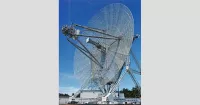
Radar is a radiodetermination system using radio waves to detect...

Thunderstorms also known as electrical or lightning storms are characterized...
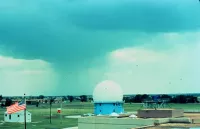
Weather radar is a crucial tool for detecting precipitation assessing...
The National Weather Service NWS is a US federal agency...
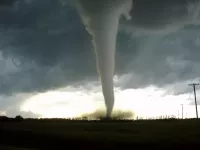
A tornado is a rotating column of air connecting the...
Trending
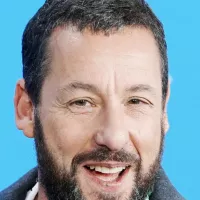
8 months ago Adam Sandler in 'Jay Kelly' with George Clooney; Rival movie releases compared.
2 months ago Eddy Piñeiro: 49ers Kicker, NFL's Second-Most Accurate, Cherishes Relationship With His Father.
Ameer Abdullah is a professional American football running back currently playing for the Indianapolis Colts in the NFL Drafted by...

7 months ago Jennifer Garner and John Miller share passionate kiss; Ben Affleck spotted solo.
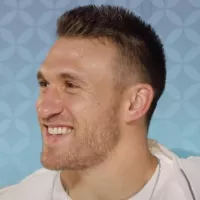
3 months ago Kyle Juszczyk's wife, Kristin, shares the beginning of their love story and career support.
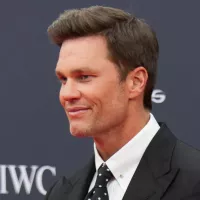
Tom Brady is a retired American football quarterback renowned as one of the greatest of all time He played seasons...
Popular

Tucker Carlson is an American conservative political commentator known for...

Candace Owens is an American conservative political commentator and author...

XXXTentacion born Jahseh Dwayne Ricardo Onfroy was a controversial yet...
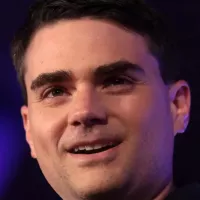
Ben Shapiro is a prominent American conservative political commentator media...

William Franklin Graham III commonly known as Franklin Graham is...

Bill Gates an American businessman and philanthropist revolutionized personal computing...
